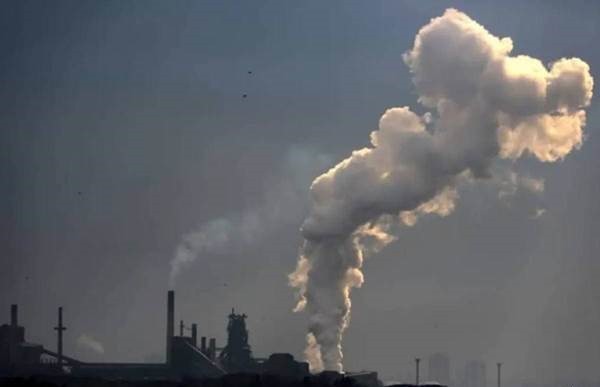
Malaysian exporters to the European Union (EU) or those in the supply chain are subject to the Carbon Border Adjustment Mechanism (CBAM), and must begin providing data on the embedded emissions of their products, said speakers at a recent workshop organised by UOB Malaysia.
CBAM puts a fair price on carbon emitted during the production of carbon - intensive goods that enter the EU. This is meant to prevent carbon leakage, in which EU - based companies move their carbon - intensive production abroad to avoid carbon - pricing mechanisms in the EU, and to encourage cleaner production abroad.
Embedded emissions, which are also know as embodied emissions, refer to the greenhouse gases emitted during the production and transport of goods.
The transitional phase of CBAM kicked in last year, requiring EU importers to submit quarterly CBAM reports and collect data from their suppliers. The definitive regime will only start in 2026, where importers have to start purchasing or surrendering CBAM certificates equivalent to the embedded emissions imported in their goods.
“We know that the CBAM is just the beginning. Other jurisdictions will eventually impose similar mechanisms, as countries and governments are trying to compel businesses to decarbonise,” said Moreen Joseph, chief sustainability officer at UOB, at the UOB x PwC CBAM Supply Chain Imperatives Masterclass.
It is estimated that around 75% of Malaysia’s exports to the EU will eventually be impacted by CBAM. Currently, it only covers six sectors: aluminium, electricity and hydrogen, chemicals, iron and steel, cement and fertilisers. This is expected to be expanded going forward.
Under each sector, there is a specific list of goods that is subject to CBAM. For instance, under aluminium it includes powders, bars and wire, iron and steel covers sheet piling, and tubes of cast iron and tanks while for fertilisers, they include ammonia and nitrates of potassium.
Staying competitive
Malaysian exporters will have to prepare for CBAM by tracking their embodied emissions and beginning their decarbonisation journey.
“There is no legal requirement in CBAM legislation that compels you to provide the data to your importer. However, you should likely expect these customers to go elsewhere if you don’t provide that information,” said Richard Baker, director for sustainability and climate change at PwC Malaysia.
“I’m actually also seeing now in procurement teams, as part of their tendering process, they are requesting this information up front. They ask to show me what policies are in place, what tools you have, [and] show me your method of calculation even before they extend the contract.”
Importers of goods with high carbon content will have to pay higher fees to procure CBAM certificates, which are calculated based on the weekly average auction prices of the EU emissions trading scheme ETS allowances.
This is to offset the difference between the carbon price that they would have had to pay if the good was manufactured in the EU, under the EU ETS. The cost would be lower if the origin country of the imported good also has a carbon - pricing mechanism.
Ask what information is needed
The data - gathering process will not be easy. The EU importers will ask their suppliers to provide information on the installation, production and emissions of the goods.
For instance, they will want to know the production process, route, specific direct and indirect embedded emissions, information on the data quality and determination approaches used, and whether any carbon price was paid. The CBAM supplier or communication template is available on the EU’s website.
“There are nine tabs of information to fill up, and each has 20 to 30 information data points. So, ask your importers, what is the information required from you? Try to make your life easier and ask, what you need?” said Baker.
The calculation for the actual embedded emissions of simple goods, which are those with input materials that have no embedded emissions, involves dividing the embedded emissions — which includes indirect emissions from electricity used — with the production volume in the corresponding reporting period.
For complex goods that are made of multiple materials, the EU allows 20% of the total embedded emissions of the input materials to be calculated using estimates or default values, which is a standard measurement of carbon for a particular product. The default values can be found on the EU’s website.
Baker also explained that for the first year of CBAM implementation, companies can report according to the EU’s methodology, based on the equivalent third country national systems or based on reference values. But by Jan 1, 2025, only the EU’s method of reporting will be accepted.
Getting the house in order
How should companies prepare for this? Baker suggested appointing someone internal to oversee CBAM and communicate with the various parties. Secondly, companies should set up an internal process on how and when to gather and submit the data. They should also consider what technologies they can use to facilitate the process.
“If your company is quite aware of ESG, you may already have some calculations already. You may want to do a gap analysis. What data is missing, what data has not been checked or verified?” he added.
There are grants, incentives and financing available to help Malaysian companies decarbonise, such as the Green Investment Tax Allowance and the Malaysian Investment Development Authority’s ESG Adoption Grant.
“Malaysia is an exporting nation, and we are part and parcel of the global supply chain. CBAM will impact us, and the last thing I want, as a banker in this country, is for any of our businesses to be locked out of the global supply chain,” said Ng Wei Wei, CEO of UOB Malaysia during her closing remarks.
Source: https://theedgemalaysia.com/node/712450

